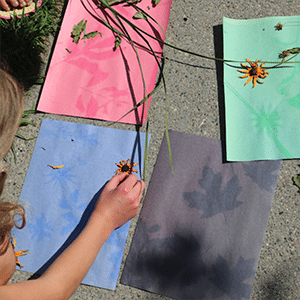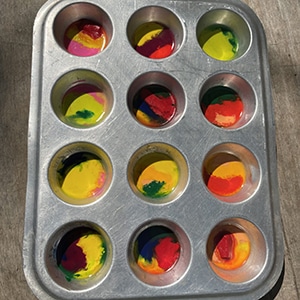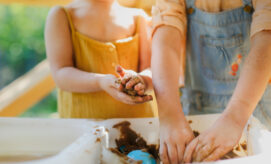A fun way to explore the sun and the impacts of its light is to make sun prints! This simple activity requires only a few items: blank sheets of construction paper, items found in nature, and plastic wrap. To get started, invite the children to go on a nature walk in your yard and ask each of them to collect some leaves and flowers that have interesting shapes. Then, give each child a sheet of construction paper and help them arrange their selected items on the paper to form an interesting design. Finally, you’ll place a large sheet of plastic wrap over the top of each design. You might want to secure the plastic wrap with tape, and place rocks on the edges of the paper to make sure that they don’t blow away.
Let the plastic wrap-covered designs sit in the direct sun for two to three hours. Then, take the children outside and help each child remove the plastic wrap and nature items to discover that the sun left behind a print of the construction paper designs!
As little ones reveal their final products, you can share that the sun emits ultraviolet (UV) light that causes a chemical reaction in the paper that results in a change to the paper’s color. Invite the children to compare their sun prints to see if some of the paper changed in color more than others.







